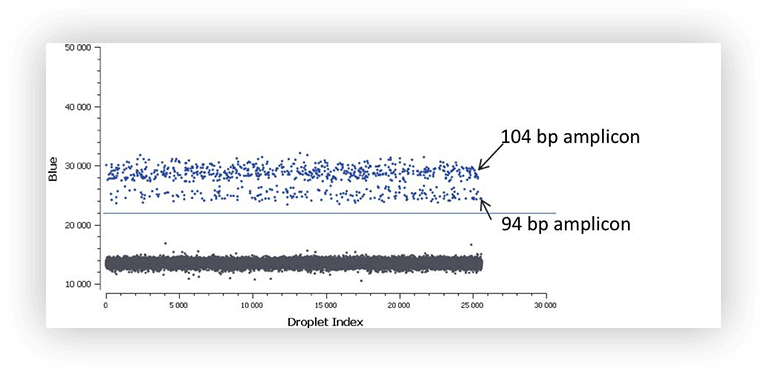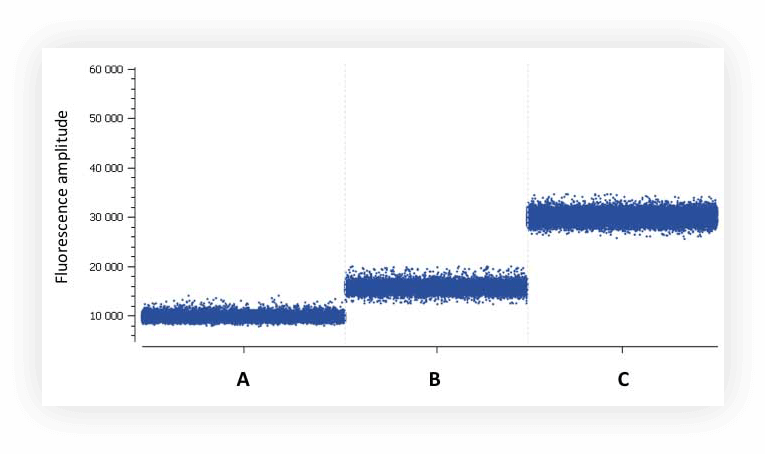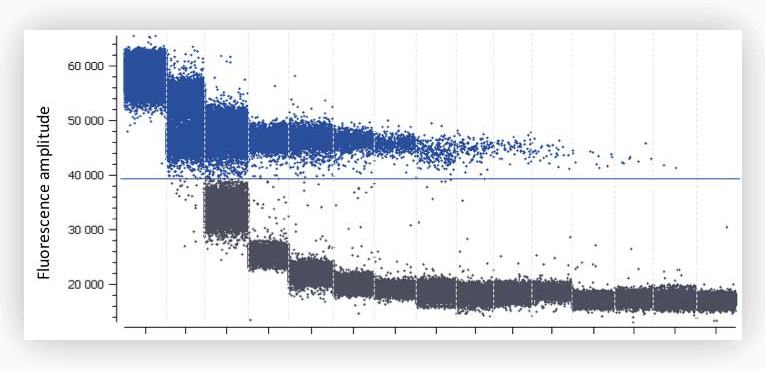Fluorescence considerations with EvaGreen® dye
Fluorescence intensity of the positive signal
The fluorescence intensity of positive partitions in digital PCR experiments with EvaGreen® depends on the length of the double-stranded DNA amplicons that are generated during PCR. At equivalent PCR efficiencies and primer concentrations, long amplicons will produce a more intense fluorescent signal than short ones (Figure A). This is explained by the fact that more Evagreen® molecules will bind to the long amplicons relative to the short amplicons.

Figure A. At equivalent PCR efficiencies and primer concentrations, the 104 bp amplicon will produce a more intense fluorescent signal than the 94 bp amplicon.
Fluorescence background
Different reasons can explain a higher fluorescence background:
- Presence of single-strand DNA: what you must keep in mind is that although EvaGreen® dye is highly fluorescent when it is bound to double-stranded DNA, a fluorescence background can be observed in presence of single-stranded DNA which can be caused by primer dimers. To minimize this effect, make sure you design short primer sequences that will not form dimers, and that the final concentration of your primers in the PCR mix does not exceed 250 nM.
- The high molecular weight of your DNA sample: if you are working with human DNA for example, the EvaGreen® dye will bind to the starting material. Even if this starting material is present in low concentrations, it will be capable of capturing large amounts of EvaGreen® per DNA molecule. In turn, this may prevent adequate separability of negative and positive populations after PCR amplification. To limit this phenomenon, the initial input of DNA in your digital PCR experiments should be assessed with respect to the fluorescent signal generated by the positive partitions and you should avoid a high concentration of DNA.

Figure B. Background fluorescence of partitions in digital PCR using EvaGreen® chemistry. A: master mix with no DNA template and no primers, B: master mix with 15 ng human DNA template and no primers, C: master mix with 200 nM primers and no DNA template.

Figure C. Digital PCR experiment using EvaGreen® on a serial dilution of human genomic DNA. High background fluorescence can be observed with the 3 first dilutions containing 130, 66 and 33 ng of DNA respectively.
